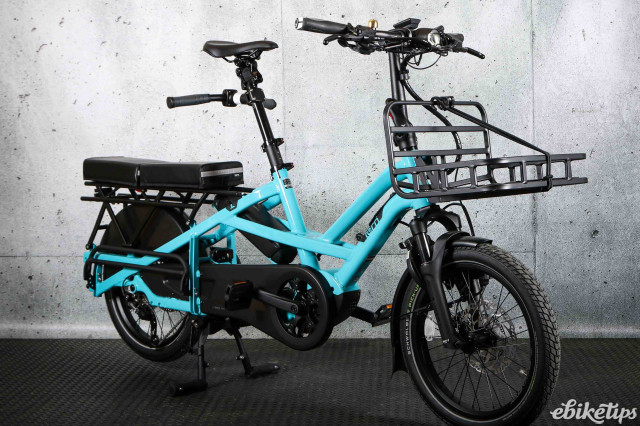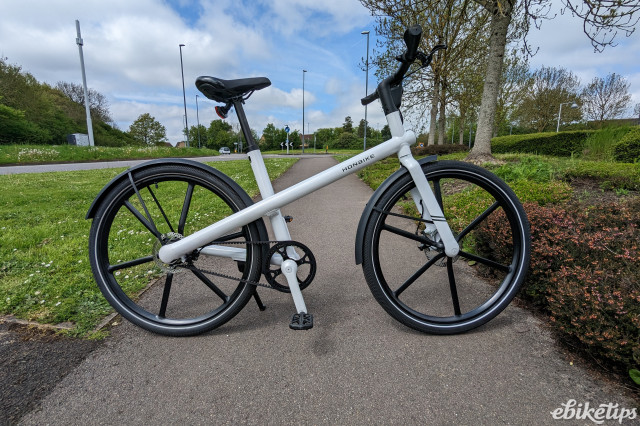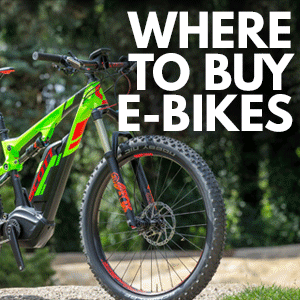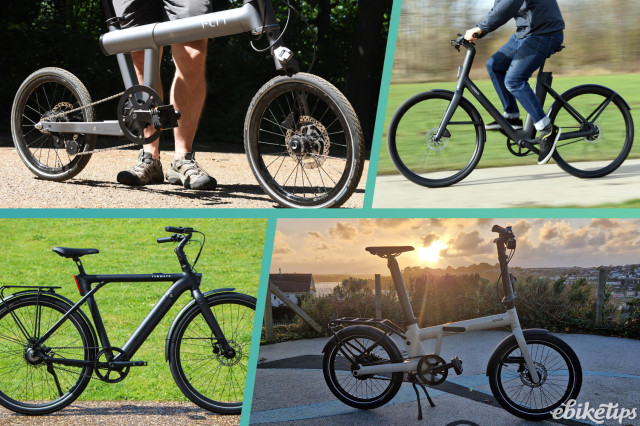Review: ARCC Abington Electric

Overview
- High quality manufacturing
- Lightweight frame and motor
- Lots of options to suit different riders
- No kickstand mount and trailer mounting may be tricky
- Price
In the Abington Electric, ARCC have married their clever motor system onto a unique frame, and it’s very classy indeed with very few issues to report.
Buy the ARCC Abington Electric here
eBikeTips has already reviewed the ARCC electric assist system for Brompton. The elements that make up the assist system for the low-maintenance Abington model are similar; a 250W geared front hub motor and a unique ‘pod’ (wiring nexus and battery mount) clamped securely on to the head tube which communicates wirelessly with the handlebar-mounted Bluetooth controller (or an iPhone with appropriate app if preferred). The Pod also acts as the battery mount. Electric assist is delivered via a bottom bracket-housed torque sensor and there are brake lever sensors that cut out the motor when they are applied and are used for the launch control feature and described under ‘Smart Features’ below.
Batteries are simply Bosch power tool batteries in nominal 144Wh and 216Wh capacities; there is also the option of buying an even larger 324Wh Bosch battery although it’s only available through other retailers. Using these is a great idea, as they’re widely available, reasonably priced and likely to be around for a long time to come. They should take a lot of real world use as they are designed to survive a 3m drop. The only real downside is that they are small capacity compared to the modern standard of 500Wh batteries, and on relatively small capacity batteries power can fade a little at low charge levels; an upside is the fast charging, of course.
The Abington is described as a ‘sleek town bike’ and would certainly get you around town, but it would also be great for electrically-assisted leisure rides and even long distance touring; especially the Rohloff variant tested here.
The frame is made of Reynolds 631 steel tubing which is hand-brazed by ARCC technicians to produce a lovely, smooth finish. This particular spec of Reynolds tubing is used for its combination of strength and suppleness (look out for the distinctive double top tube design). Even more distinctive are the rear stainless steel dropouts so that the bike can take a variety of rear hub options (all of which come with a Gates Carbon Belt Drive, which I’m a big fan of). The frame, like the ARCC assist system, looks extremely well made with impressive attention to detail.
Apart from the wire from torque sensor to the Pod all cable runs are externally routed, but it’s done very neatly they aren’t too noticeable. ARCC use alloy cable holders to route the cabling along the underside of the downtube, and they’ve also CNC-machined the downtube-mounted spare battery holder.
Options
A great plus point of these made-to-order bikes is flexibility of the specification. Four low maintenance gearing options are available: single speed, Shimano Nexus 8 or 11 speed and the hub gear to end all hub gears, the Rohloff 14 speed Speedhub. All come with a Gates Carbon Belt Drive rather than the traditional chain, a great low maintenance combination as it is virtually ‘fit and forget’.
There’s a choice of three frame sizes and the option of quick-release EZY pedals. While low rise handlebars are standard and give a comfortable ride position, other options are available on request.
If you need carrying capacity then ARCC also have the option of an alloy Tortec rack, and for rough weather you can spec high quality SKS mudguards.
At 40mm wide the Marathon Plus tyres on 650B (ETRTO 584mm) rims provide comfort from the tyre width, good manoeuvrability from the wheel size and huge amounts of puncture protection in the form of a 5mm thick Kevlar belt built into the tyre itself.
If you like the sound of these features but fancy a step-thru frame, ARCC also offer a similarly electric version of their Rosemont model, also steel-framed and hand-brazed.
It should be noted that pricing for the Abingdon Electric starts at £3,099 – the price quoted for our test model includes the upgrade to a 14 Speed Rohloff Speedhub system, SKS full-length mudguards and a Tortec rack.
The ride
Looking at the monster of a hub in this bike I thought it would be quite heavy but was pleased to see, with a single battery, it came in at 19.2kg on my Park Tool scales and 20.53kg with a second battery which you can carry around on the lightweight CNC machined battery holder on the downtube (mudguards included in the weight). A 20.5kg bike with well over 400Wh battery capacity and virtually puncture proof tyres is pretty impressive by today’s standards and indicates a pretty light frame and motor. The Rohloff Speed hub option on my test bike certainly adds a fair bit of weight; indeed ARCC say the single speed Abington Electric starts at around 14kg for the most basically equipped version.
The torque sensing power delivery means that as soon as you start pedalling the power begins to ease in and quickly stops after you stop pedalling, so the algorithms are clearly well set up and doing their job.
Geared hub motors like this one generally perform best at a fairly narrow range of speed and so tend to be set up either as hill climbers, to give plenty of torque at low speed, or to give assistance at slightly higher speeds. It’s a case of swings and roundabouts as a motor set up for hillclimbing may disappointingly run out of power at higher speeds whilst a ‘speedier’ motor may not give you the support up the hills you imagined.
The Bafang motor fitted to the ARCC Abington climbs pretty well and assists at speed pretty well, suggesting the compromise on the internal motor gearing is about right. I found the Rohloff’s low gearing extremely helpful on the testing hills around Sheffield as the torque sensor seems set up to react to fairly light pressure, meaning the optional way to tackle hills was to maintain a fairly high pedal cadence and keep up at least a few mph. The only time there was any real appreciable noise was setting off in the higher power settings from a standing start. As with any e-bike with a pretty small hub motor you won’t get Bosch-like hill climbing power, but you will most likely get a lighter e-bike and in this case one that is more than capable up hills, especially when you have low hub gears available too.
On easier going terrain I found the bike gliding along and over the cut out limit for electric assist at 15.5mph there was little noticeable resistance from the motor. In fact the combination of belt drive and the three sets of planetary gears inside the Rohloff hub means there was more notable ‘stiction’ from the rear end than the front end. This is to be expected on the Rohloff hub as your pedal power is being transmitted through quite a number of metal gear teeth (the effect is greater in some gears more than others). These hubs are built to do many thousands of miles without being touched and this effect should lessen as the gears wear in. Moreover, this extra friction is much less of an issue on an e-bike as you have the power of the motor to help overcome it. Adding a rack and a few extra batteries would make for an awesomely durable and reliable long distance tourer.
Braking from the Shimano BR-RS305 disc brake calipers was sufficient though without the modulation you get with hydraulic disk brakes and keeps with the low maintenance theme as it means your rims should last forever and occasional brake pad changes and even rarer cable changes are the only real maintenance required.
The riding position gave a comfortable yet sporty ride (for something more sedate see my comments on the Rosemont above). If you are riding over rolling terrain rather than severely testing hills the much lighter single speed version would probably likely feel like a different bike, especially if fitted with some lighter, faster (though less puncture resistant) tyres.
Smart Features
It’s worth picking out the unique design features of the ARCC. The Bluetooth handlebar unit links wirelessly to the Pod and allows you to set your power level and to switch between auto and manual settings – the difference between these two is explained in more detail in the ARCC Brompton review, suffice to say the auto-setting uses the accelerometer that is housed in the pod to provide a bit of extra kick on hills. All Bluetooth and software coding is done in house at ARCC.
If you want to dive into more detailed settings there is an app, but to make full use of this you will need to have an iPhone attached to your bars. Sadly there is no Android version available, so I couldn’t road test this aspect. ARCC do say it will let you alter the assist level parameters and also give speed and distance readings, and display a battery icon showing capacity.
There's also a handy launch control feature; simply squeeze both brakes firmly when stopped and apply downward pressure to the pedals, and the system provides max power for taking off quickly, if you want to get ahead of traffic from a red light start for example. Along with the hub gear which can be changed to any gear whilst at a standstill (unlike derailleur gears) this makes for a great town bike in busy traffic.
There are three USBC ports on the side of the Pod for charging all manner of gizmos on the go. They will certainly charge most phones and GPS units out there, and may even do tablets and small laptops depending on their power requirements (two can provide 0.5amps charge current and the top one is rated to provide 1.5amps).
Conclusion
In summary, this is a very classy e-bike. My only niggles were the lack of frame braze-ons for a rear kickstand and possible issues with attaching a trailer hitch (depending on the hitch) due to the large bolts for belt tension adjusting used on the rear dropouts.














